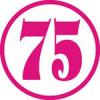
Apparel represents a $276 billion retail market in the U.S. and the industry employs large numbers in textile manufacturing (116,000), apparel design and production (170,000), apparel wholesale distribution (140,000), and an impressive three million in apparel retailing. With promising employment figures like these, it’s easy to understand why many fashion students are drawn to fashion retailing and fashion merchandising.
While both areas play a significant role in the fashion industry, there are a few differences in the exact role each plays and the education pathways for each. According to the Art Institutes (AI), a fashion retailing program “teaches students how to use their combined creative and business skills to display, market, and sell fashion merchandise. The well-trained student is able to effectively understand and meet the customer’s needs, and ultimately encourage sales.” As such, fashion retail graduates typically pursue careers in retail sales, retail management or visual merchandising.
According to the College of Agriculture at Cal Poly Pomona, “merchandisers examine trends in the fashion industry and translate these trends to meet the needs of the consumer in order to boost sales through in-store marketing.” As such, fashion merchandising graduates have the education and skills needed to pursue a career in retail or visual merchandising as well, but because programs go a step further by preparing students for entry into higher-level positions, they can pursue a career as a fashion buyer, fashion director, product development manager, fashion director, divisional merchandise manager, fashion buyer, director of visual merchandising, planner, catalog production manager, and many others.
In addition to differences in education pathways and careers, fashion retailers and fashion merchandisers can expect to earn different salaries. According to the U.S. Bureau of Labor Statistics, retail workers average $25,760 per year (mean). The average for the top 10 percent is $39,300 per year, and the bottom 10 percent is $17,030 per year. Most fashion retailers work in clothing stores and department stores, and the highest levels of employment are in California, Texas, Florida, New York, and Pennsylvania. However, with an annual mean wage of $29,220 per year, North Dakota is the highest paying state for fashion retailers.
Fashion merchandisers in general, and fashion merchandisers working in high-level positions, can expect higher salaries than fashion retailers. According to Cal Poly Pomona, fashion merchandisers can expect to earn around $127,200 per year, while a director of visual merchandising can expect to earn $122,500 per year. Planners average around $74,150 per year, and divisional merchandise managers average $212,500 per year. Like fashion retailers, fashion merchandisers can expect to find the highest employment levels in California, New York and Texas.
Degree Programs
Just a few schools that offer fashion retailing programs include the University of Alabama, Tuscaloosa, AL (BS in Human Environmental Sciences with a Concentration in Apparel Design, Fashion Retail Major), the Art Institutes, more than 50 locations (Fashion Retailing Diploma), and LIM College, New York, NY (MPS in Fashion Merchandising and Retail Management). Because fashion merchandising is a very popular program, hundreds of programs are available at schools the U.S. Just a few of the best include:
- Fashion Institute of Technology (FIT), New York, NY – AAS, BS Fashion Merchandising
- Kent State University, Kent, OH – BS Fashion Merchandising
- Drexel University, Philadelphia, Pennsylvania – BS Design & Merchandising
- Oregon State University, Corvallis, Oregon - BS Merchandising Management
- University of Delaware, Newark, Delaware - AAS Fashion Merchandise Management, BS Fashion Merchandising
For more information about the best schools for fashion merchandisers, take a look at the Top 75 Fashion Merchandising Schools in the U.S.
Sources
"27-1022 Fashion Designers." U.S. Bureau of Labor Statistics. U.S. Bureau of Labor Statistics, 25 Mar. 2015. Web. 29 Sept. 2015.
"41-2031 Retail Salespersons." U.S. Bureau of Labor Statistics. U.S. Bureau of Labor Statistics, 25 Mar. 2015. Web. 28 Sept. 2015.
"Apparel Merchandising and Management." Cal Poly Pomona - College of Agriculture, 2015. Web. 28 Sept. 2015.
"Art, Fashion Design, Culinary Arts Schools - The Art Institutes." The Art Institutes. The Art Institutes, 2015. Web. 28 Sept. 2015.
"How Much Do Consumers Spend on Apparel?" U.S. Bureau of Labor Statistics. U.S. Bureau of Labor Statistics, n.d. Web. 28 Sept. 2015.





